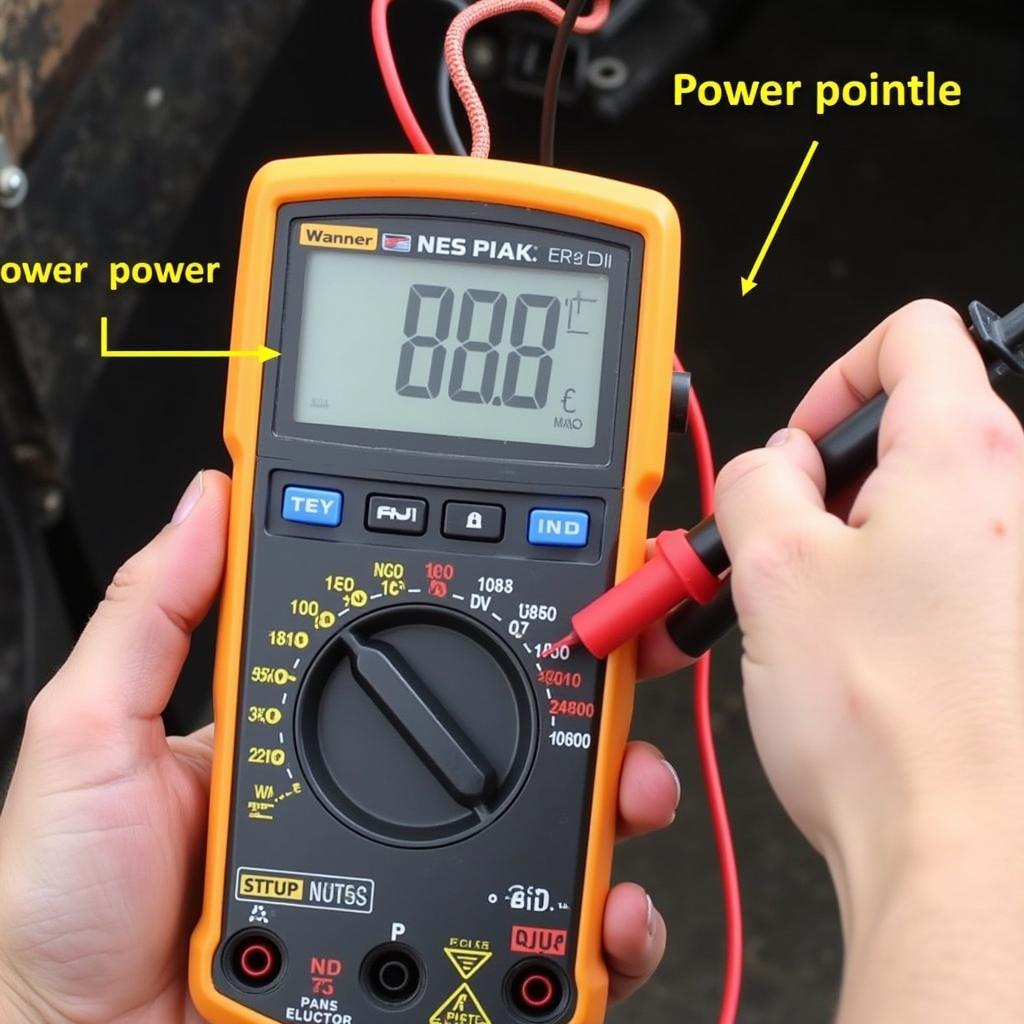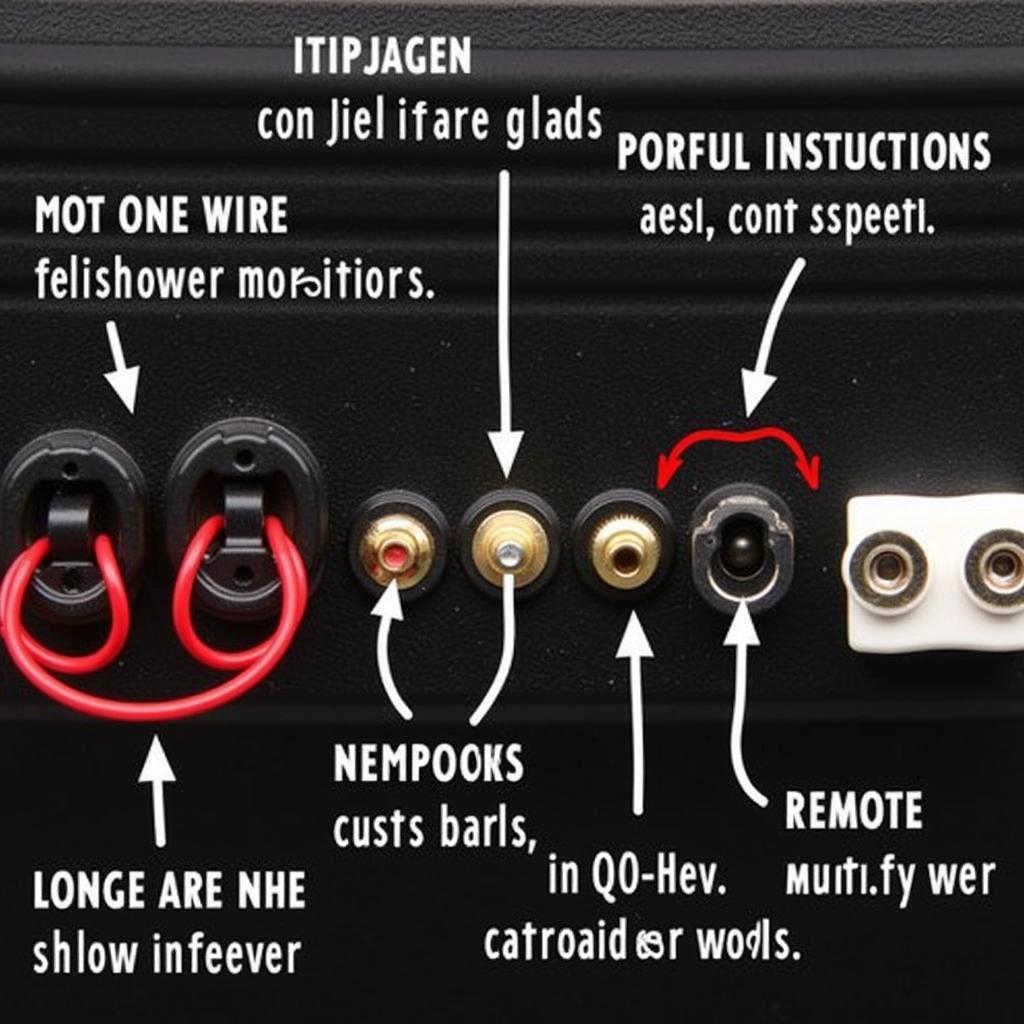The dreaded brake pad warning light on your Mercedes E Class dashboard – it’s a sight that can send shivers down any driver’s spine. While it can be alarming, it’s important to remember this light is your car’s way of communicating a potential issue with a critical safety system. This article will guide you through understanding what triggers this warning light, the potential causes, and the steps you can take to address the problem.
Understanding Your Mercedes E Class Brake Pad Warning Light
Your Mercedes E Class is equipped with a sophisticated sensor system designed to monitor the condition of your brake pads. When the brake pad material wears down to a certain level, this sensor triggers the warning light on your dashboard. This light usually appears as a circle with dotted lines on either side surrounding an exclamation mark, and in some models, the word “BRAKE” might also illuminate.
What Triggers the Brake Pad Warning Light?
While worn brake pads are the most common culprit, there are other potential triggers for this warning light in your Mercedes E Class:
- Worn Brake Pads: As your brake pads wear down over time, the sensor embedded within the pad material eventually makes contact with the brake rotor, triggering the warning light.
- Faulty Brake Pad Sensor: Like any other electrical component, the brake pad sensor itself can malfunction. A short circuit, broken wire, or corrosion can lead to a false positive warning.
- Low Brake Fluid Level: Your brake system relies on hydraulic pressure created by brake fluid. If the fluid level drops too low, it can trigger the brake pad warning light, often accompanied by a separate brake fluid level warning light.
- Issues with the Brake System: In some cases, problems within the brake system itself, such as a malfunctioning ABS module or issues with the brake lines, can indirectly trigger the brake pad warning light.
What to Do When the Brake Pad Warning Light Comes On
Seeing the brake pad warning light doesn’t necessarily mean you need to slam on the brakes and call a tow truck. However, it does warrant immediate attention. Here’s a step-by-step guide on what to do:
- Assess Your Driving Conditions: If you’re in heavy traffic or on a highway, safely maneuver your vehicle to a safe location off the road as soon as possible.
- Check Your Brake Fluid Level: Locate the brake fluid reservoir under the hood (refer to your owner’s manual for the exact location). If the fluid level is low, adding brake fluid might temporarily address the issue, but it’s crucial to have a mechanic inspect for potential leaks.
- Avoid Heavy Braking: While your brakes should still function, avoid heavy braking as much as possible to prevent further wear and tear on the pads.
- Schedule an Inspection: Even if the warning light disappears after adding brake fluid, schedule an inspection with a qualified mechanic specializing in Mercedes vehicles as soon as possible.
The Importance of Addressing the Warning Light Promptly
Ignoring the brake pad warning light can lead to several serious consequences:
- Compromised Braking Performance: Worn brake pads significantly reduce your car’s ability to stop effectively, increasing your stopping distance and the risk of an accident.
- Damage to Brake Rotors: Driving with severely worn brake pads can cause the metal backing plate to grind against the brake rotors, leading to costly damage that requires rotor replacement.
- Increased Repair Costs: Addressing the issue promptly when the warning light first appears is generally less expensive than delaying repairs and potentially damaging other brake components.
Mercedes E Class Brake Pad Replacement and Costs
The cost of brake pad replacement for your Mercedes E Class can vary depending on factors like the year and model of your vehicle, the type of brake pads chosen (OEM vs. aftermarket), and labor costs in your area. It’s always best to consult with a trusted mechanic for an accurate estimate.
mercedes e class brake wear warning
Tips for Prolonging the Life of Your Brake Pads
- Anticipate Stops: Avoid sudden, hard braking whenever possible. By anticipating stops and gradually slowing down, you reduce the amount of wear and tear on your brake pads.
- Lighten Your Load: Carrying excessive weight in your vehicle puts extra strain on your brakes. Travel light whenever possible.
- Avoid Riding the Brakes: Constantly resting your foot on the brake pedal, even lightly, can generate excessive heat and wear down your pads prematurely.
Remote Diagnostics and Programming: The Future of Mercedes E Class Brake Repair
Advancements in automotive technology have paved the way for remote diagnostics and programming, offering Mercedes E Class owners a new level of convenience and efficiency for addressing brake pad issues. Specialized technicians can remotely access your vehicle’s computer system to diagnose the cause of the warning light. In some cases, they can even perform software updates and resets remotely, eliminating the need for a trip to the mechanic.
“Remote diagnostics is a game-changer for Mercedes owners,” says Michael, a seasoned automotive electrical engineer specializing in Mercedes vehicles. “It allows us to pinpoint problems quickly and efficiently, often saving our clients time and money.”
mercedes a class brake pads warning light
Conclusion
The brake pad warning light on your Mercedes E Class dashboard is a crucial safety feature that should never be ignored. By understanding its meaning and taking prompt action, you can ensure optimal braking performance, prevent costly repairs, and most importantly, stay safe on the road. Remember, regular maintenance and timely attention to warning signs are key to keeping your Mercedes E Class running smoothly for miles to come.


